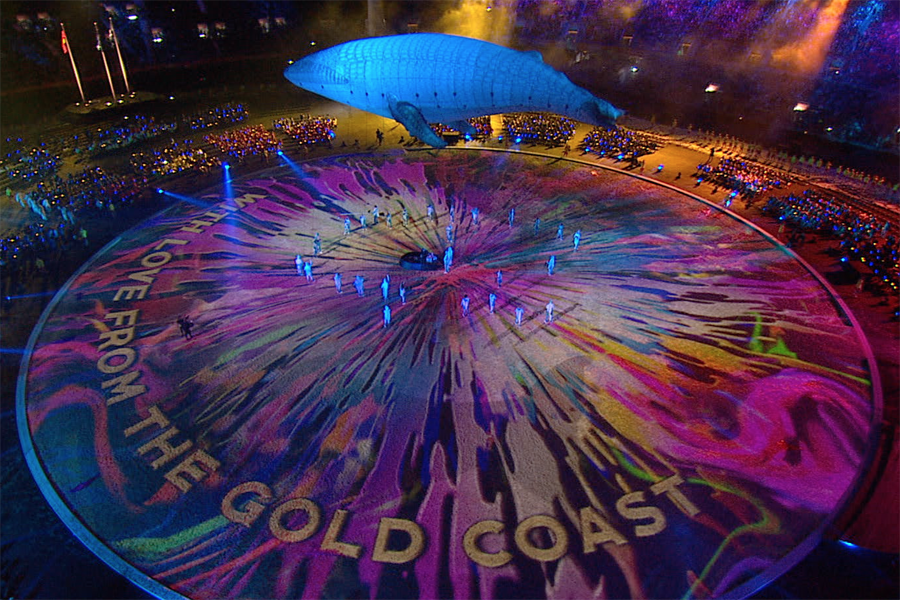Modulo Kinetic on track at Gold Coast Games
- Details

The 21st Commonwealth Games took place in April at the Carrara stadium in Queensland. Produced by Jack Morton Worldwide, the opening and closing ceremonies were spectacular shows with 4,000 volunteer performers. Combining theatre, dance, and music, the shows were created to reflect the Gold Coast culture, embodying its spirit and its energy.
After winning the tender, The Electric Canvas prepared the event over six months. To achieve such a large-scale video projection in the stadium, they chose 20 x Christie Boxer projectors, as well as Modulo Kinetic, a powerful media server with advanced features from Modulo Pi.
Peter Milne, director of The Electric Canvas, explains: “I’ve been involved with Yannick Kohn - founder of Modulo Pi - and his technology for nearly 20 years now. When he launched Modulo Pi in 2010, we were very keen on adopting his latest system, Modulo Player.”
Recognised internationally as a leader in large-scale and architectural projections, The Electric Canvas has relied on Modulo Player for several years now: “We use Modulo Player on many projects because we really like the X-map among other features.”
Working closely with the content producer, The Electric Canvas designed the projection overlay which determined how to cover the field of play, and how to project the other elements efficiently, while providing maximum creativity. The main video projection was a visualization of Earth and its history, projected on the stadium playfield.
In a time-critical context, The Electric Canvas’ operators made the best of Modulo Kinetic’s capability to preview the show in 3D: “During the day, when we don’t have the benefit of darkness, we can run the show from the recording of the previous evening, using video of the rehearsal, to then further fine-tune the programming of the projection.”
The show also included 3D mapping on Migaloo, a 30m long inflatable white whale, handled by 12 puppeteers. The whale floated into the arena, with content projected onto it after it reached its final position. The projection on the whale then transferred to the field of play at the end of the sequence.
About the utilisation of Modulo Kinetic on this international multi-sport gathering, Milnes concludes: “It was reliable, flexible, and easy-to use in a situation that can sometimes change dramatically every day. The Modulo Pi media servers are very specifically built for technicians and for the creatives that do the type of work that we do.”
(Jim Evans)
















